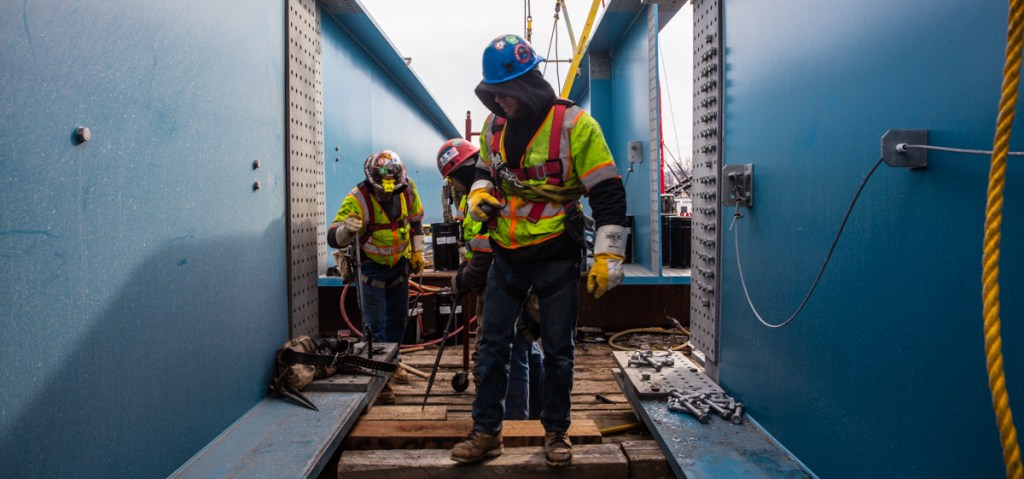
We start by getting to work on some long overdue projects.
You probably already figured this one out on your own, but the United States entered a recession in February. That’s according to the National Bureau of Economic Research, the government agency that is officially charged with monitoring such things.
The bureau on Monday cited the shutdowns in response to coronavirus pandemic as the chief factor for the economic downturn – again, no surprise. As CNBC reported, U.S. GDP fell 5% in the first quarter, and “is likely to post the worst decline in history for the second quarter – possibly more than 50%.”
We already know the devastating impact all of this is having on everyday Americans. The United States saw 20.5 million jobs lost in April alone; businesses big and small are shutting their doors for good.
Although the Labor Department on Friday reported an increase of 2.5 million jobs, we still have a long way to go to reach a full recovery. It’s also worth noting that Black and Asian workers were left out and actually saw an increase in unemployment, so the small jobs gains that we are seeing so far aren’t reaching everyone equally.
Now, there are some among us who believe that we’re already nearly there. That is not the case, and there’s no guarantee that the worst of the pandemic is even behind us, given that COVID-19 cases are on the rise in a whole lot of places. Public health experts continue to warn that a second wave come fall is possible, which might force a new round of closures.
Meanwhile, there are other factors at play. Manufacturing is a good case study for this, as AAM President Scott Paul noted on Friday.
“Manufacturing has fewer barriers to return to work – ease of social distancing, strong safety protocols already in place, many firms exempted from state shutdown orders – so the major obstacles now are weak demand, plunging exports, and the continuing public health crisis,” he said.
Suffice to say, getting the economy back on track and creating plenty of good-paying jobs will take more than just opening things back up and hoping it goes well. It’s up to Congress to do something that will not only jumpstart the economy, but literally lay the groundwork for a long-term recovery.
It’s time to rebuild America.
Despite the ongoing jokes about infrastructure week, there’s a reason why everybody keeps coming back to it. America’s bridges, ports, schools, water systems, airports, pipelines, transit, railways, roads, electric grid and more are all in terrible shape, earning a D+ grade by the American Society of Civil Engineers.
And last month, we saw the devastation that can happen when we ignore infrastructure for too long.
Investing to rebuild and repair our crumbling infrastructure is long overdue, and the good news is that putting a plan into action will create millions of jobs. A 2014 Duke University study found that a $114 billion plan could create 2.5 million jobs; Georgetown University researchers reported in 2017 that a $1 trillion plan could create 11 million jobs.
It’s time to think big, and America can look to one past success to find out how to get the job done. AAM’s Scott Paul writes in Real Clear Politics that when the Works Projects Administration (WPA) was put into place during the Great Depression, 8.5 million jobs were created.
But the WPA ultimately did even more than that.
“It was a massive infrastructure program that is still physically evident today. The landmark Griffith Observatory… in Los Angeles. Midway Airport in Chicago. Camp David in Maryland,” Paul writes. “Today’s disaster was brought on by pandemic, not a banking crash. But the nation’s needs today are similar. The economy is on the verge of atrophy. There are already armies of unemployed. Be it direct cash payments to every American or a functioning Paycheck Protection Program, millions more will soon need financial aid. And no matter who is president in 2021, we’re going to need a jobs program to put people back to work and infrastructure investment to drive it.”
Many of the masterpieces built by the WPA in the 1930s are still with us. We can do the same thing now, helping in our own recovery and creating infrastructure that will help the United States thrive in the decades to come.
Even if the coronavirus ultimately fades away, the economic fallout from the crisis is likely to linger for some time. Congress needs to get serious about finding ways to jumpstart the economy and create millions of good-paying new jobs.
Investing in infrastructure – and including commonsense Buy America provisions that ensure that work takes place in the United States rather than sent overseas – seems like an obvious place to start.
